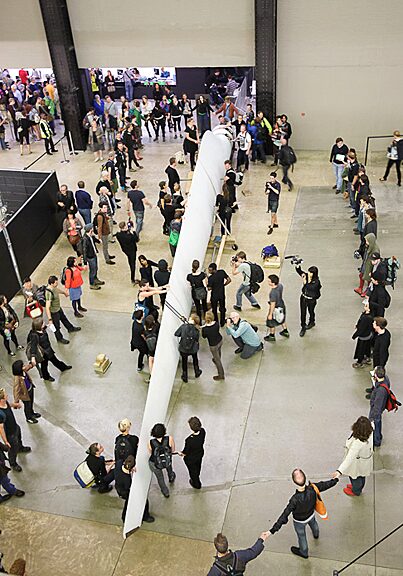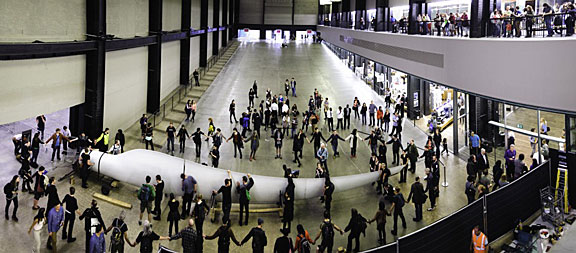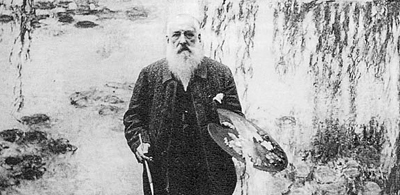Tate Modern Rejects “The Gift”
There are those who credit the Tate Modern in London for being in the vanguard of promoting and collecting “cutting edge” postmodern art. A 2010 installation at the Tate Modern’s Turbine Hall by Chinese artist Ai Weiwei is often mentioned in that context. Working with the Tate, Ai had assistants cover the entire Turbine Hall floor with over 100 million handmade porcelain sunflower “seeds”. What it all meant was open to interpretation, but for the next 48 hours the public was invited to frolic through the thick carpet of seeds, until the museum roped off the area because of hazardous ceramic dust.
In 2012 the Tate purchased ten tons of Ai Weiwei’s porcelain sunflower seeds, around 8 million individual seeds, for the museum’s permanent collection. The acquisition represented less than a tenth of the seeds used in the original installation. The Tate would not divulge the purchase price of their acquisition, but at a 2011 auction at Sotheby’s the white ceramic seeds were sold for £3.50 each (around $5.00).

In the latest, albeit unauthorized, installation at the Tate Modern’s Turbine Hall, the artists and activists of the Liberate Tate art collective delivered an artwork titled The Gift to the Tate Modern on July 7, 2012; the gift being an enormous 54 foot, one and a half ton wind turbine blade. Over 100 Liberate Tate group members carried the leviathan blade, disassembled into three huge parts, to the Tate Modern’s Turbine Hall.
Getting the blade past the panicked Tate security guards was difficult enough, but once inside the hall the group reassembled the blade under the watchful eye of museum guards and police officers.
Think of Liberate Tate’s wind turbine blade as a gigantic Duchampian style readymade, but one with a clear and timely message. The windmill blade, icon of renewable energy, is placed inside the Tate, recipient of major funding from the international oil company, BP. Conceptual art with an actual concept! There is no small irony in this, since the Tate has in its collection a replica of Fountain, the porcelain urinal Marcel Duchamp submitted to an exhibit organized by the Society of Independent Artists in 1917.
The Tate website describes Fountain with the following: “Fountain is an example of what Duchamp called a ‘readymade’, an ordinary manufactured object designated by the artist as a work of art. It epitomizes the assault on convention and good taste for which he and the Dada movement are best known.” The Tate understands “readymade” and “assault on convention” in a purely academic way, but fails to comprehend any contemporary real world application. Can anyone really explain why a urinal is a “work of art” but a windmill blade is not?

The Liberate Tate art collective put forward their wind turbine blade as a “gift to the nation” under the provisions of the UK government’s Museums and Galleries Act of 1992. This requires the Tate to officially consider accepting the work as part of its permanent collection. Liberate Tate formally submitted their artwork as a gift to the nation in an official letter to Sir Nicholas Serota, the Director of the Tate. The letter in part read: “We gift this artwork with the intention of increasing the public’s understanding and enjoyment of contemporary art.” Liberate Tate spokesperson Sharon Palmer told the press:
“For more than 20 years Tate has been used by BP to present an image of corporate benevolence while the oil company has been involved in environmental and human rights controversies the world over.
We’re approaching an irrevocable turning point in our ability to address the climate crisis, so now is the time for Tate to look to the future and remove itself from the destructive heart of the fossil fuel economy. Liberate Tate has created this artwork using an icon of renewable energy with an express wish that Tate will have the courage to take leadership in addressing the threat of catastrophic climate change and end its relationship with BP.”
In a separate public statement, Communiqué #3 The Gift, Liberate Tate offered a rather poetic explanation of The Gift, and what motivated them to bequeath their giant wind turbine blade to the nation. An excerpt from the message reads as follows:
“Despite recent reports that our biosphere is approaching a ‘tipping point’ where ecosystems are close to a sudden and irreversible change that could extinguish human life; despite years of creative protest and thousands of signatories petitioning Tate to clean up its image and let go of its relationship with a company that is fuelling catastrophe; despite all these things, Tate continues to promote the burning of fossil fuels by taking the poisoned ‘gift’ of funding from BP. This is why today we have given you something you could not refuse.
The law of this island requires that all ‘gifts to the nation’, donations of art from the people, be considered as works for public museums. Consider this one judiciously. We think that it is a work that will fit elegantly in the Tate collection, a work that celebrates a future that gives rather than takes away, a gentle whispering solution, a monument to a world in transition.
Resting on the floor of your museum, it might resemble the bones of a leviathan monster washed up from the salty depths, a suitable metaphor for the deep arctic drilling that BP is profiting from now that the ice is melting. But it is not animal, nor is it dead, it is a living relic from a future that is aching to become the present. It is part of a magic machine, a tool of transformation, a grateful giant.”
Not surprisingly, just hours after the public and Liberate Tate’s members were cleared from the Turbine Hall by museum security, the Tate removed the 54 foot wind turbine blade from the hall to an undisclosed location. One can surmise that it was not even considered by the Tate Board of Directors for acceptance into the museum’s permanent collection.
Liberate Tate’s performance and installation was captured on film and posted on the VICE News website. Felix Goncalez and Stephanie Thieullent of You And I Films also documented the event in a short video they call The Gift.



